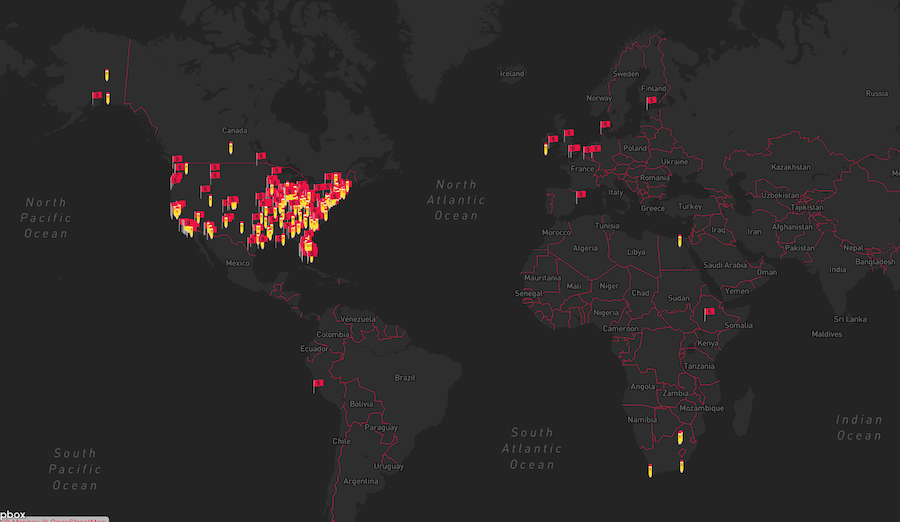It’s not easy to get someone to buy a ticket to an event that may not happen. Trying to sell subscriptions to multiple events that could be at the whim of a seemingly endless pandemic is an even bigger lift. Yet theatres faced with the challenge of retaining subscribers and members during a period of limited or no in-person productions have gotten creative, implementing plans that allow for flexibility, making virtual content available beyond their local market and expanding that content into news areas (cooking classes, anyone?).
In Atlanta, for instance, the Alliance Theatre had been preparing to launch a new membership model in March of this year—and then the pandemic happened. But what could be seen as a setback on a plan multiple years in the making actually proved to be exactly what the company needed to be able to offer their patrons.
Over the last two years, the Alliance had been beta testing what they’ve called their Impromptu Pass, a flex pass which allowed those who purchased it the opportunity to choose more freely which productions they wanted to attend and when without having to lock into dates many months in advance, according to Alliance director of development Jamie Clements (he/him). During the development of this membership, Clements said, the word “flexibility” kept coming up, with younger generations of theatregoers steering away from traditional subscriptions in favor of the ability to make a decision to attend a production days in advance rather than months.
“We were starting to gain some real traction with the 30- or 40-somethings enjoying the flexibility,” Clements said, noting that patrons tend to fall on a continuum between wanting fixed seats and wanting options; providing a flexible membership opened the door to those on the continuum looking for the ability to adjust.
That flexibility became a key point for the Alliance, which rebranded the Impromptu Pass to become its new membership program. In July, the Alliance began selling 12-month memberships that would begin when the theatre was able to start its season (be that virtually, in-person and socially distanced, or any variety of options in between). This, Clements said, allowed loyal patrons to raise their hands early to support the theatre while also leaving plenty of leeway for a fluid schedule that could change completely based on safety restrictions.
“We decided, since this product is based on flexibility,” Clements said, “what better time for us to provide a product to our patrons that allowed for the ultimate flexibility for the limited programming that we’re having this year?”
This year’s programming has dropped from what would normally be around a 10- to 12-show season down to just six shows, and is slated to begin in December. Clements pointed out that with the membership, no matter the setup or adjustments needed to make sure the production is safely produced, patrons will be able to partake. In fact, the Alliance has suspended its traditional fixed seat and date subscriptions this year, instead offering subscribers memberships instead. Clements was quick to note that those subscribers will have the option of returning to their traditional subscriptions next year.

“We have about 5,000 subscribed seats every year,” said Clements. “We didn’t want to just lock, stock, and barrel say that we’re done with subscriptions. We have a lot of patrons who don’t want flexibility—they know they are second Saturday, and every run that’s the day that they’re coming. They know exactly what seat they’re sitting in, and that’s what they like.”
The need to rearrange seating assignments among days and productions meant that the Alliance had to slow walk this idea a bit, as they waited for technology to catch up with the needs of the program before a full-scale rollout. The Alliance uses the ticketing and box office software Tessitura, and they weren’t willing to move their entire ticketing system to a new platform for the sake of launching their membership model. “We knew we wanted to scale this program up quickly,” Clements said. “But we were waiting for the technology to catch up so that it wouldn’t be a process for a staff member to have to take care of.”
Patience paid off, as their current membership provides patrons with a self-service way to book and exchange tickets, including within the theatre’s app, which was rolled out two years ago. With the app, patrons are able to book same-day tickets and scan those tickets from their phones. Clements, noting that there weren’t many membership programs in the performing arts, credited the High Museum of Art, which shares a campus with the Alliance and uses Tessitura in a similar way, for helping the theatre with this program.
When we spoke last week, Clements said that the theatre had 200 pre-sales for their membership, and that’s before an additional member push the company expects to roll out heading into the holidays. He also expects the membership to continue picking up steam as the Alliance continues to solidify what it will be able to offer in the coming months. As theatres move forward, perhaps looking at flexible memberships to survive the pandemic, Clements emphasized the importance of planning ahead and making sure these decisions truly serve the needs of patrons.
“Doing case studies, sample discussions, and focus group discussions with current subscribers and our Impromptu Pass holders was really important to see what’s actually important to each one of these groups,” Clements said. “We’ve had to walk the tightrope between making a membership a better deal than a traditional subscription versus trying to keep them fairly comparable in the beginning so that subscribers don’t think someone else is getting a much better deal even though they’ve been a subscriber for 35 years.”

Similarly pressed by the pandemic to adjust course on subscriptions is Theater Mu in St. Paul, Minn., where the theatre decided to pair food and cooking with their virtual subscription packages. The decision to add virtual subscriptions emerged in August, when continuing uncertainty around in-person productions meant the theatre couldn’t sell full season subscriptions yet, according to Theater Mu marketing and communications director Kevin Duong (he/him).
The difficulty came when trying to design a subscription to events that would otherwise be free, as their virtual offerings have been. For most of its in-person programming, Theater Mu had operated with a “pay as you are” ticket structure, which informs patrons that the market value of a ticket is $35, though tickets can be purchased for as low as $5, so the theatre was already familiar with leveraging subscription value against cheaper individual tickets. Because the theatre is not heavily reliant on ticket and subscription sales in general, it allows them to shift the way both patrons and the company view subscriptions.
“Our subscriptions are a way to express your pride in our theatre and to be able to align with our values,” said Duong. “I know a lot of other theatres might be horrified to hear this, but our measurement of success for these virtual subscriptions was if one person would subscribe.”

With no pressure to hit certain benchmarks, Duong said, the theatre felt free to experiment with these virtual subscriptions. The question still remained: How do you make sure a subscription has value when all the events are free? After a conversation with his college-aged brother, Duong took a look at Twitch, a free game-playing streaming platform which also allows people to subscribe or donate to receive bonus content. In the world of Twitch, that usually results in an icon or “badge” next to the subscriber or donator’s name. For Duong and Theater Mu, they had to figure out what they’d be able to provide their patrons as a bonus.
“We thought of what is important to our theatre and what is important to the Asian American community specifically, because that’s the main community that we serve,” Duong said. “Food is kind of the epicenter of the language that we use to talk to each other. When we see each other, it isn’t, ‘How are you?’ It’s, ‘Have you eaten?’”
It was decided that the theatre would offer virtual subscribers a food component. Duong mentioned ideas like sending pizza or goody bags to subscribers to enjoy while they watch the virtual events, but none seemed like the right fit for the theatre’s resources and capacity. The final choice wound up being to send subscribers a shopping list, a recipe, and a cooking instructional video for a dish curated by one of Theater Mu’s artists. Each artist was able to choose their dish, then film themselves cooking the dish “as if they’re on Food Network,” said Duong, who also edited the footage. The theatre paired one video with each of their virtual events.
“We didn’t think about this at the time,” Duong said, “but it’s been a really great way to engage with our subscribers to sustain engagement. Sometimes the most impactful content and programming is the small, simple, and intimate content. That’s why we go to the theatre in the first place: to be in these spaces where we can have these intimate experiences.”

Unable to gather for those in-person experiences in Chicago, Steppenwolf Theatre Company has been using their new Steppenwolf NOW virtual platform and subscriptions to expand the company’s reach. According to artistic director Anna Shapiro (she/her), the company realized early on that the shutdown was going to last for a long while. Knowing that live theatre can’t be replicated, the company discussed and interrogated what their theatre—and theatre in general—could offer in its place.
Of course they knew the value of their ensemble—the “lifeblood” of Steppenwolf, as Shapiro put it. But they also saw how important it was to not allow this moment to put them on their back foot and threaten to halt the company’s overall growth. The desire to keep evolving has the team focusing on the short term while anticipating an entirely different world in the long term.

“We very quickly put together Seagull,” said associate artistic director Leelai Demoz (he/him) of a Zoom reading back in May. “That works great in April of 2020, but in January of 2021, our audience has evolved. What we want to do is evolve.”
That evolution is embodied in Steppenwolf NOW, which offers a world-wide audience exclusive Steppenwolf content like June’s radio play version of Arthur Miller’s The American Clock, which featured ensemble members Laurie Metcalf, John Malkovich, Joan Allen, and more under the direction of Austin Pendleton. Steppenwolf’s virtual stage, which gives members access to all Steppenwolf NOW content through Aug. 31, 2021, has grown so that the theatre’s digital audience comprises viewers from 300 cities, 41 states, and 12 countries. But even as the theatre’s content is reaching more corners of the world, Shapiro finds value in staying true to their Chicago roots.
“It’s doubling down on what we’re committed to and showing the world that’s interested in what we do,” said Shapiro. “We have members all over the world, and I love that they will see a less mass-marketed America. This is the opportunity to say, this is actually the American theatre.”
Shapiro was quick to add that she means no shade on Broadway. After all, she was in New York City in March, mere days away from opening The Minutes, which has now had its Broadway opening delayed until 2021. Still, she said, if Broadway is the only American theatre the world sees, they will miss out on the dynamic, varied voices of the nation’s regional theatres. These regional nuances—and the potential of offering a global slate that includes any number of regional theatres—are why Shapiro is heavily committing to the work offered under Steppenwolf NOW.

“We’ve realized in the last week that this is no longer a Band-Aid,” Shapiro said. “This is what we do until someone tells us it’s not what we do, which means that we have to reassess the financial decisions we’ve made—in terms of who got furloughed and for how long and in terms of the budgets for these pieces—and go back to the drawing board, which is not easy. What we’re understanding now is that, oddly, the longer it goes on, the deeper we have to commit to it, because we take our responsibility seriously around what we offer, the quality we offer, and what our audiences need.”
Fortunately, Shapiro pointed out, Steppenwolf has an executive director and board chair who are able and willing to encourage Shapiro to spend money on people and the art. And when it comes to deciding on what to produce, Shapiro has turned to voices that had already been scheduled for the season, essentially recommissioning them to create work for their digital subscribers. One example: Steppenwolf was in rehearsals for James Ijames’ The Most Spectacularly Lamentable Trial of Miz Martha Washington when they were cut short due to COVID-19; the full production was postponed until the 2021-22 season. But Ijames’ work is still part of Steppenwolf’s programming, as his filmed play What Is Left, Burns is streaming as part of Steppenwolf NOW.
While Shapiro was hesitant to make any calls on what NOW’s place might be when the theatre’s in-person work is able to resume, she did say that she doesn’t think “you can look at the effect of Steppenwolf NOW and our virtual work with education and walk away from that. I think it’s going to be a redefining moment for us in terms of what we think we’re capable of,” added Shapiro. “All theatres in this country have to look at their communities and see what they’re capable of.”
Jerald Raymond Pierce (he/him) is associate editor at American Theatre. jpierce@tcg.org


